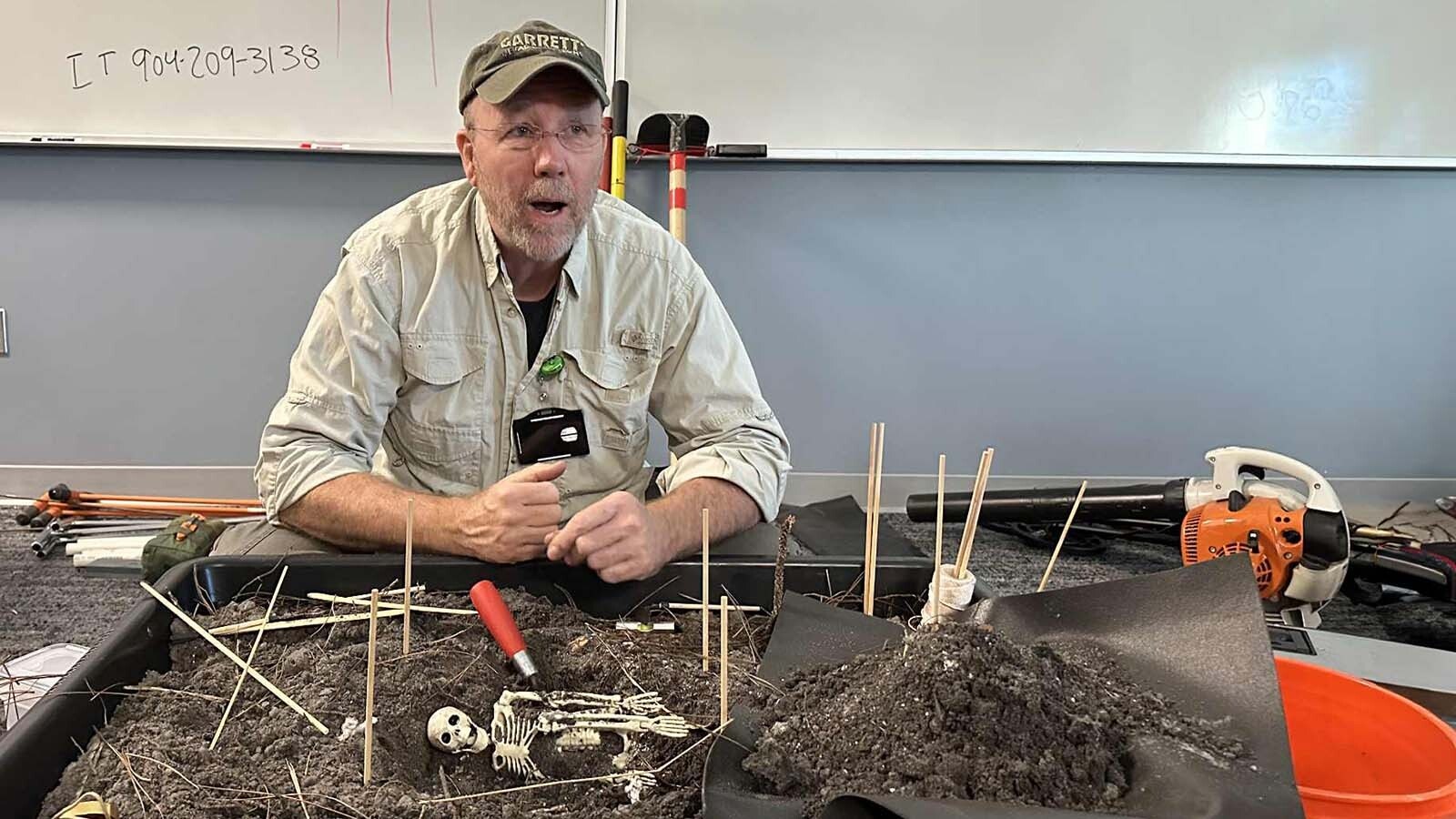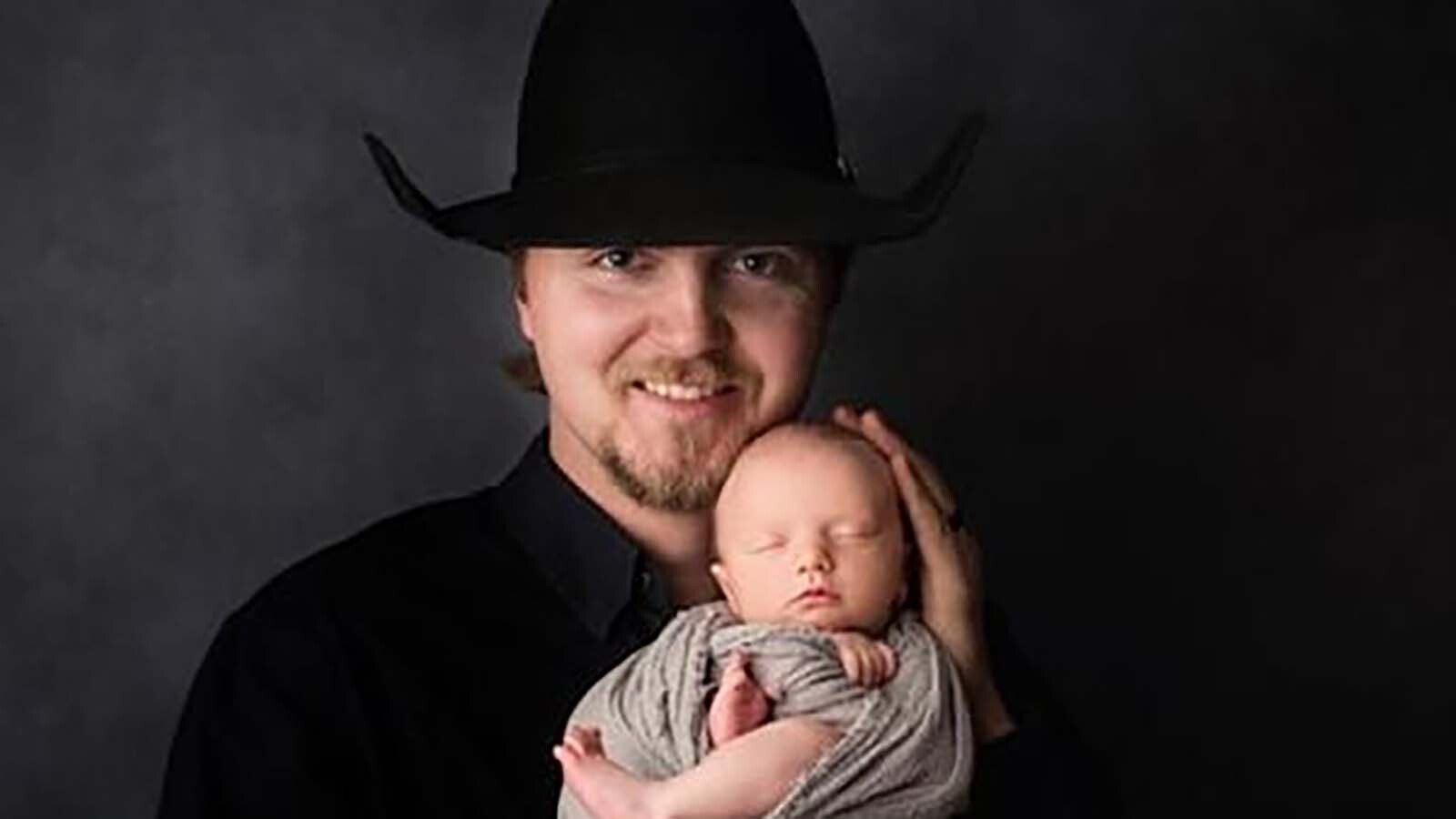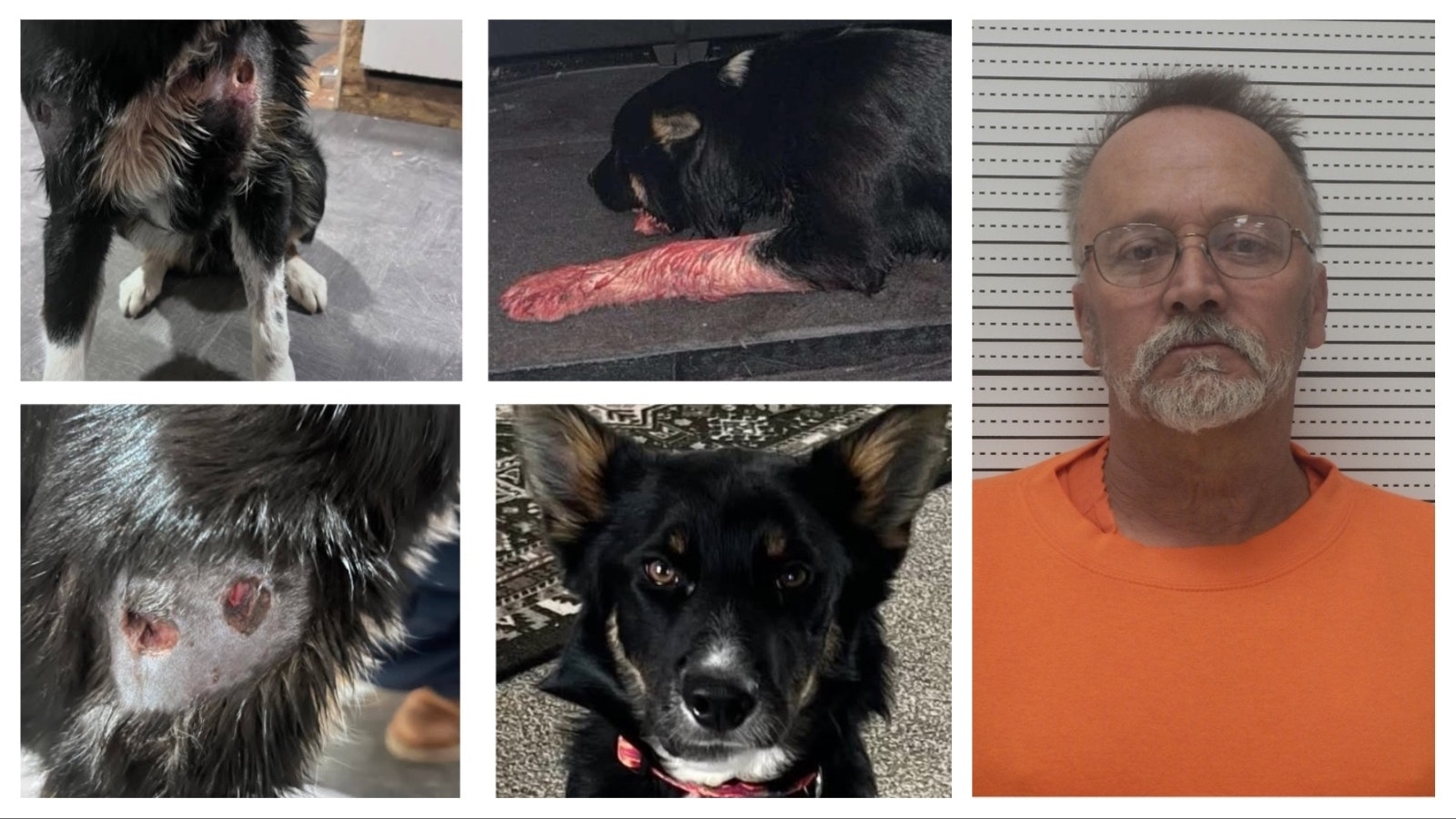The human remains discovered in rural Nebraska earlier this month are being evaluated to either confirm or rule out whether they are those of missing Moorcroft man Chance Englebert.
Englebert, then 25, disappeared while visiting his in-laws in Gering, Nebraska, over the Fourth of July weekend in 2019.
Items found near the skeletal remains by a hiker on the north side of Scotts Bluff National Monument were determined by his family to belong to Englebert.
In the meantime, the body has been sent to the Douglas County Coroner’s Office in Omaha, Nebraska, for DNA testing to determine the identity and cause of death.
There are no updates on where the evaluation stands, according to a spokesperson for the coroner’s office who directed questions to the Scottsbluff County Attorney’s Office.
County Attorney David Eubanks did not respond to a request by Cowboy State Daily for an update.
The Gering Police Department, likewise, did not respond to questions about whether the scene on the north side of Scotts Bluff National Monument where the remains were found is still under investigation or whether the FBI has been called in to help.
An Oct. 16 release from the department indicated that the investigation was still active and ongoing with “multiple local and federal agencies participating.”
Some in Nebraska are calling for the FBI to be brought in, assuming the agency isn't already involved.
The Facebook Page “The Panhandle Scanner” launched a petition on Oct. 15 to bring in the FBI on Englebert’s case. As of Friday afternoon, it had more than 23,000 signatures.
Englebert’s family, meanwhile, said they are still waiting for an affirmative identification and for the investigation to be completed.
They have not heard anything from authorities since the initial call two weeks ago indicating that the remains may their son. Englebert’s mother Dawn has thanked the public for their ongoing support.
“I would like to thank everyone for their love, prayers and support through this whole process,” she said via Facebook Messenger on Friday. “Please stay kind and respectful.”
Waiting For Identification
In the absence of answers, questions abound as to how the remains — whether or not they’re Englebert — ended up on that rugged, rocky cliff in the remote northern side of the national monument, which is not popular for hiking, as described by local Gering resident Kelly Mumm.
Mumm had been out walking his dog along an irrigation ditch road on the northside of the monument two weeks ago when the remains were discovered.
He spoke to police on scene and took photos of rescuers excavating the body, which he said was about a quarter mile from where he stood.
On the night that Englebert disappeared, he had walked off from his in-law's house in Gering after getting into an argument with his wife Baylee's family members while golfing that afternoon.
He told friends and family that he planned to walk the roughly 35 miles to Torrington, Wyoming, following the North Platte River.
Englebert was last seen on video surveillance in Terrytown, about halfway between Scottsbluff and Gering, and between 3-5 miles from where the remains were recovered, according to Ryan Couch, a former private investigator who has been working with the Englebert family for the past two years.
Identifying Remains
The question now becomes identifying the remains and determining how that person died, whether by natural causes, accident or foul play.
This is now up to the forensic pathologist and scientists from the University of Nebraska in Omaha as they begin the tedious and painstaking process of examining the remains.
Tom Myers, a retired FBI special agent specializing in forensics, has taken part in many such recoveries throughout his 25-year career with the federal agency.
Along with his law enforcement work, Myers teaches courses on the forensic science of buried bodies and surface skeletal crime scenes and consults on documentaries and film projects, including “Under the Radar” about a Swedish serial killer.
Myers has no knowledge of this particular case or the work being done, but spoke generally about the process of recovery and what forensic scientists and anthropologists will be looking for as they examine the remains.
The DNA analysis is a straightforward process, he said, and can now usually be extracted from any bone, possibly even those sitting outside for six years in the elements, but certainly from larger bones, he said.
The timeline can take anywhere from a week to several weeks or months depending on the integrity of the DNA samples and the backlog at the respective lab, Myers said.
A recent DNA analysis of missing man Kyle Ellis took about nine weeks to process at the Wyoming Division of Criminal Investigation’s crime lab in Cheyenne.
Studying Bones
The human remains extraction process is highly variable depending on the remains and that particular scene, he said, but generally speaking, bones should remain in situ, or in their original place, until everything has been carefully photographed and examined by investigators and forensic anthropologists on scene.
The remains and site should be treated like a crime scene, he said.
“Once you start mucking about, you start messing up the scene,” Myers said.
For this reason, remains are carefully extracted in a variety of ways to preserve any evidence and protect the integrity of the remains.
In the instance of these particular remains, it’s likely that the bones were only partially covered by shale from rain runoff given that they were located by a passing hiker, as reported by the Gering Police Department.
It’s not clear whether the skeleton was intact or whether bones were scattered from the elements or natural predation, Myers noted, but either way, the bones will hold vital clues.
If DNA testing does prove the remains belong to Englebert, Myers said the first thing investigators will do is look at medical records for pre-existing scars, broken bones or other injuries.
After six years, there would be no soft tissue left to analyze, he said.
Force Of The Fall
Forensic pathologists and scientists then need to determine how the person might have gotten to the spot on the cliff where the remains were found and how that person might have died, whether by jumping, a fall, natural causes or foul play.
Given the towering cliffs above the site, there’s a fair chance the person may have jumped, fallen or been pushed off one of the precipices above, Myers said.
Or, they could have climbed up the steep overhang and slipped on rain-soaked shale on a dark, rainy night and stumbled to their death.
Perhaps the person was a victim of a crime — or any combination thereof.
Every scenario will have some telltale signs, Myers said, that should be discernible in the bones.
“If they fell from that height, you would see trauma right away,” Myers said, noting the fall would have caused significant trauma to the skeleton and may have caused fractures in the hips, spine, head and pelvis.
Myers likened one type, an impacted or buckle fracture to the legs, as being similar to a collapsing telescope. Broken arms and leg bones may also indicate a fall.
One type of fracture investigators will be looking for is called a Roy-Camille fracture, which is caused when impact energy is transmitted to the lower spine and the vertebrae of the upper sacrum buckle from the force of the fall, he said.
Windy, Rainy Weather
Hypothermia might also be a factor, Myers said, given the temperatures on July 6, 2019, plummeted from a high of 80 degrees to the high-50s after 9 p.m. with just under an inch of rain falling during the heavy showers, according to historic data from the Weather Underground.
With maximum winds out of the west at up to 39 mph around the same time, Englebert (if him) would have been facing an equivalent wind chill in the low 40s.
Though the temperature would not be a factor, being soaked from the rain may have made Englebert at risk.
In this case, investigators would be looking for signs of discarded clothing, which happens when a person gets disoriented from hypothermia and experiences a physiological malfunction that triggers a false sense of being hot.
There are so many different scenarios to consider and so many ways that things can go wrong, Myers said.
Myers recalled one case he investigated where a victim suffered a probable head injury while freeing his car that was stuck in the mud out in a remote area with nobody around to help.
The injury didn’t, and wouldn’t have, killed him, Myers said, but it was enough to disorient him.
“He ended up becoming hypothermic after hours in the cold and began shedding his clothing,” Myers said.
The teen was later found dead in a body of water.
“The three events probably caused this interaction,” he said.
Given the storms that night, lightning might also have been a factor, Myers said.
“Lightning can duplicate almost any injury or perhaps leave no injury if it’s a near strike, and the current passed through him versus a direct hit,” he said.
It would also depend on what that person was wearing.
“Cotton kills,” Myers said, noting that in cold, wet weather it has no insulating properties, and worse, leads to the cold being trapped against the skin as opposed to other types of materials like polyester and nylons that have some insulating properties.
Signs Of Violence
In terms of foul play, there are some pretty obvious injuries that are easy to spot such as gunshot holes in clothing or bones or obvious knife wounds, including defensive wounds on the arms.
“Obviously, if you have a bullet hole or a stab wound, that’s pretty cut and dry,” he said.
Other signs of violence might be penetration to the ribs, broken ribs or trauma to the bones.
A broken hyoid bone in the neck region could also indicate someone had been strangled.
There’s numerous ways a person could have been killed, he said, but it’s not always easy to determine so other evidence like bullet casing, knives or other weapons found nearby would help investigators piece together the mystery.
Clothing also can provide clues, said Kathy Myers, Tom’s wife and a forensic nurse with a specialty in treating sexual assaults.
For example, a torn or ripped shirt might suggest some type of an assault which likely would not be present had the person fallen.
What will be difficult, Kathy said, is deciphering whether a person might have fallen or been pushed or shoved off a cliff from above.
The injuries would likely look the same, and it will be hard to determine if someone threw him off or he jumped, she said.
On top of the clues found from the remains, there are myriad other factors that will come into play based on the investigation behind that person’s disappearance should it be determined to be Englebert that will help piece together the clues.
Jen Kocher can be reached at jen@cowboystatedaily.com.




















